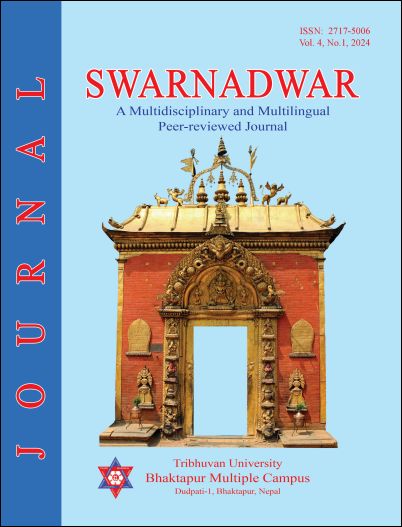Diversity of Grass (Poaceae) Flora at Nagarkot, Bhaktapur, Nepal
DOI:
https://doi.org/10.3126/swarnadwar.v4i1.71110Keywords:
Altitude, Diversity, Fodder, PoaceaeAbstract
The term “flora” describes all plant life in a specific area, habitat, or time period. The main purpose of this research was to compile floral data on grasses growing along an elevational gradient in the Nagarkot forest, Bhaktapur. The highest hill in Bhaktapur, Nagarkot (1330-2175 m), offered a rare chance to examine the variety of grass along the altitude. A total of 43 species of grasses, representing 4 subfamilies, 11 tribes, 32 genera, were identified during this research. Majority of grasses, accounting for 83% of the species were terrestrial, while 11% were lithophyte, and only 6% were aquatic which is expected for the terrain. Some of the species, such as terrestrial and aquatic or terrestrial and lithophyte, have been observed to coexist. With 24 species, the lowest elevation band (1330-1610 m) has the highest diversity, while the highest band (1890-2170 m) has the lowest diversity with only 7 species.
Downloads
Downloads
Published
How to Cite
Issue
Section
License
Copyright (c) 2024 Bhaktapur Multiple Campus

This work is licensed under a Creative Commons Attribution-NonCommercial 4.0 International License.
This license enables reusers to distribute, remix, adapt, and build upon the material in any medium or format for noncommercial purposes only, and only so long as attribution is given to the creator.




